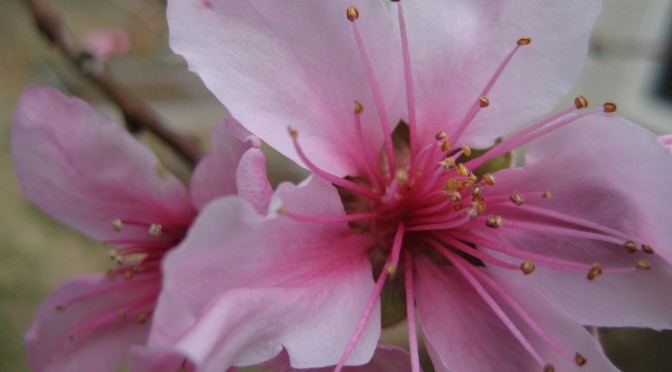As we turn the calendar page from February to March, signs of the approaching spring are becoming more and more evident for some, while many of us are still under several feet of snow. Here in Texas, within the space of a few days, the weather has gone from a spring-like 78 degrees to a snow and ice storm.
Get Started
As our thoughts also turn to spring, now is the time to take stock of our yards and make plans for our warm season garden. So grab a cold drink and find some shade, or huddle over a hot cup of cocoa and put on a warm sweater depending on what these unpredictable mornings hold, and let’s get started. By planning, and where appropriate planting now, your landscape and garden will be ready to flourish in the months to come.
Clean it Up
The best way to start getting your garden ready for spring is to clean it up. Remove any dead or spent plants from the garden and, if they are not diseased, add them to your compost pile. Pull any weeds that may have started to take hold. Once you’ve cleaned up, you will want to amend your soil by adding compost to garden beds and tilling it in. This will help replace nutrients taken up by the previous planting.
Draw a Plan
Grab a pencil and some paper and draw a diagram of your yard. You don’t need a degree in art or an expensive software program to draw a rough sketch of your landscape and garden plan. If you have the original survey from when you bought your house, make a copy of it and use that as a starting point. If not, just make a rough sketch of the footprint of your home. Draw in existing landscape features, and planned garden areas. Indicate which way is north and make note of any shady or poorly drained areas.
Plant What you Like
When planning what vegetables to plant, it’s easy to get carried away and want to grow everything under the sun. It’s always fun to try something new, but focus on growing what you really like. Make a list of the warm season vegetables for your area that your family likes and rank them from most to least liked. Plan on planting what you like. If no one in your family likes lima beans or squash, for example, then plan on planting more of what is most appealing.
Can, Store, or Eat
Once you know what you want to plant, decide what the intended use for each vegetable and herb will be. Do you plan on canning enough to last through the winter? Will you be freezing or dehydrating? Or, will you just eat and enjoy what you harvest this spring and summer. Different varieties of many vegetables are better suited to a specific purpose such as canning. Do your research.
Don’t Forget the Flowers
When planning your vegetable garden, it’s easy to overlook the importance of flowers. Look at your landscape as a whole and determine what native or locally adapted flowers are best suited to the different areas of your yard based on their color, size, water requirements, and the amount of sun needed. Flowers are an attractive, and highly effective way of drawing pollinators into the yard and garden.
Add New Beds
Now that you know what you will be planting and what your harvest will be used for, you can determine how much of each variety you should plant. Look at your existing bed space and any areas of your yard that you may want to convert to garden beds. For new beds, avoid low-lying, poorly drained areas. Clear the ground, till and amend the soil now. Better yet, try raised beds. They are a great way to avoid having to deal with the rock filled soil around here, and will maximize your harvest in the space available.
Order Seeds Now
As soon as you’ve determined which vegetables, what varieties, and how many of each you will be planting, go ahead and buy your seeds now. Be sure to check out our comprehensive Seed Source Guide 2015. This will ensure that you get exactly what you want and have them ready to plant when the time arrives; however, wait until just before planting to purchase transplants.
Know When to Plant
One of the most important factors in having a successful home garden is planting each vegetable at just the right time. Check with your local AgriLife Extension Service or our How Do Gardener Planting Guides.


